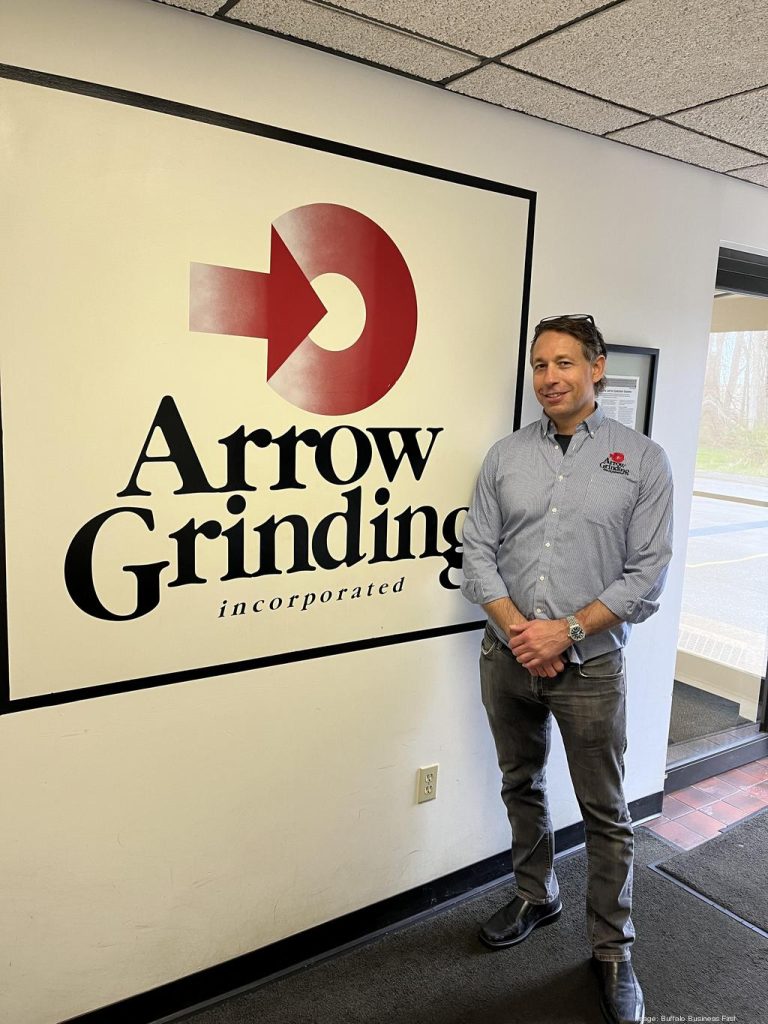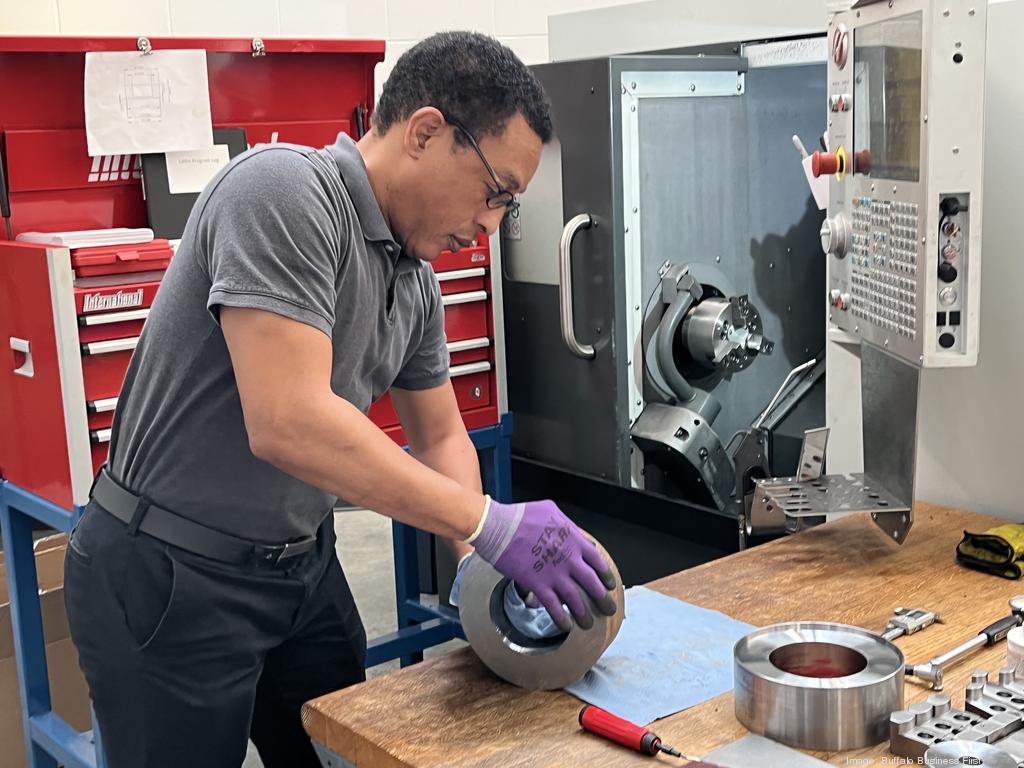
‘Sky’s the limit’ for machinists as WNY manufacturers struggle to find more
06.23.22
Story originally ran on June 23, 2022 in Buffalo Business First
By Katie Anderson — Reporter, Buffalo Business First
From working in security in Jamaica to machining in Buffalo, Oswald Love has had a transformational journey.
His grandfather was a self-taught carpenter, and his father was a mechanic.
“I just had a knack for using my hands since birth,” Love said.
The Jamaican native moved to Buffalo at the end of 2020 and started in the machining program at Northland Workforce Training Center in September 2021. He’ll graduate in May and enter an industry that’s short about 3,000 workers locally.
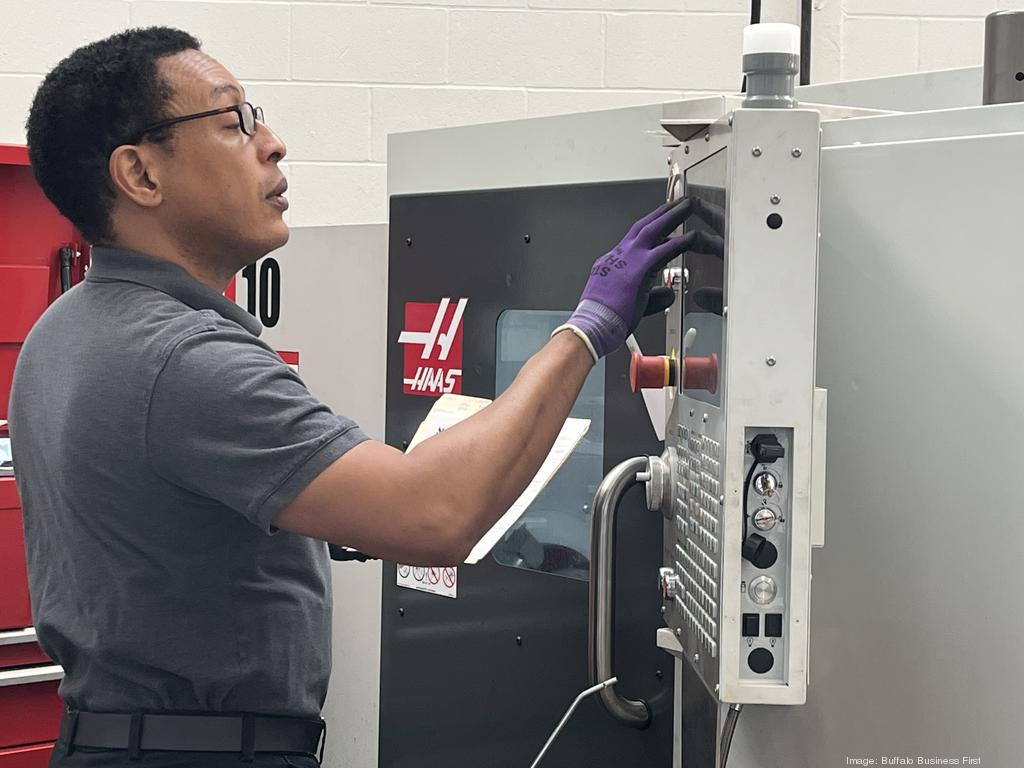
Oswald Love, a machining student at the Northland Workforce Training Center in Buffalo, programs a CNC machine.
“You can see machining in everything,” Love said. “It’s the thought of being able to produce something that would be beneficial to somebody else. You know, there will always be work. I don’t think this industry will ever die.”
Love is one of the few students entering the field. In the 2020-21 school year, Northland had 28 machining students out of its 325 total. That year, the school had 113 students studying to be electricians, 83 in welding and 101 in mechatronics.
Stephen Tucker, CEO of Northland, suspects the numbers are low because people don’t understand what machining is.
“Our highest program is electrical because people know what it is,” Tucker said. “Mechatronics is high-tech stuff that sounds cool.”
Machining is the detailed process of cutting materials into a final shape and size to create parts, tools and instruments.
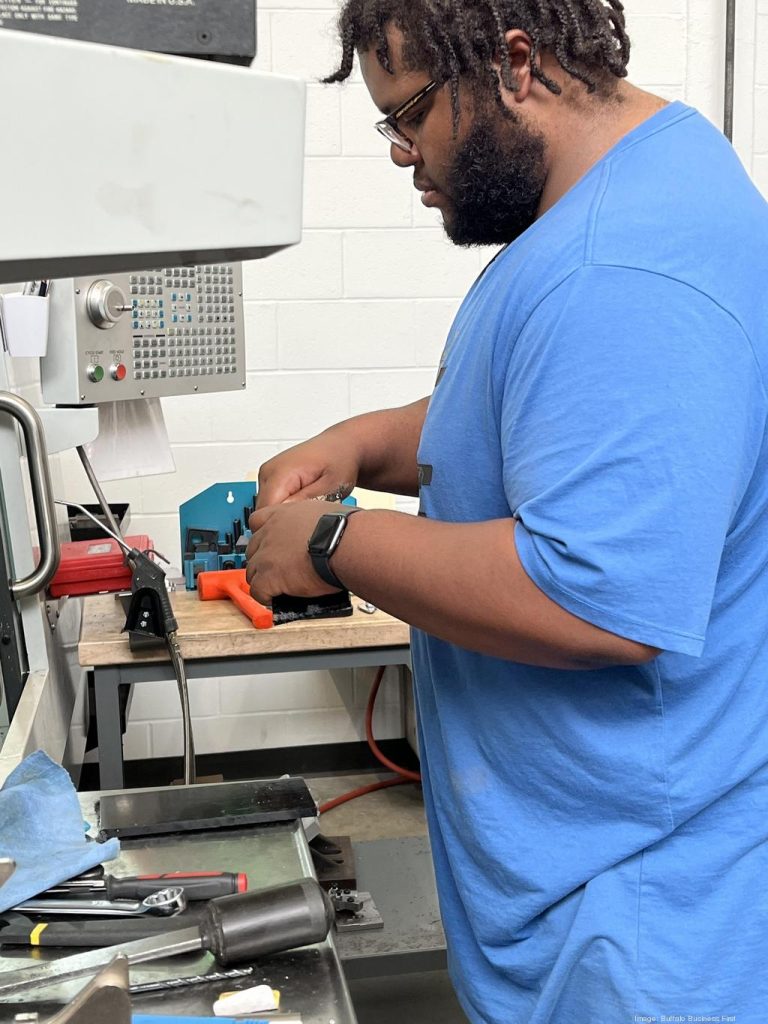
Troy Bratten, a machining student at the Northland Workforce Training Center in Buffalo, works with a part in the center’s machine shop.
Troy Bratten was in one of the first classes to graduate from Northland’s mechatronics program.
“I live five minutes from here, and I heard a lot about it when they were building it,” he said.
Bratten enjoyed the program enough to return and enroll in the machining program. He’ll graduate next year and plans to find a job in the field.
“I like troubleshooting and figuring out what’s going wrong with the machine and the programming,” he said.
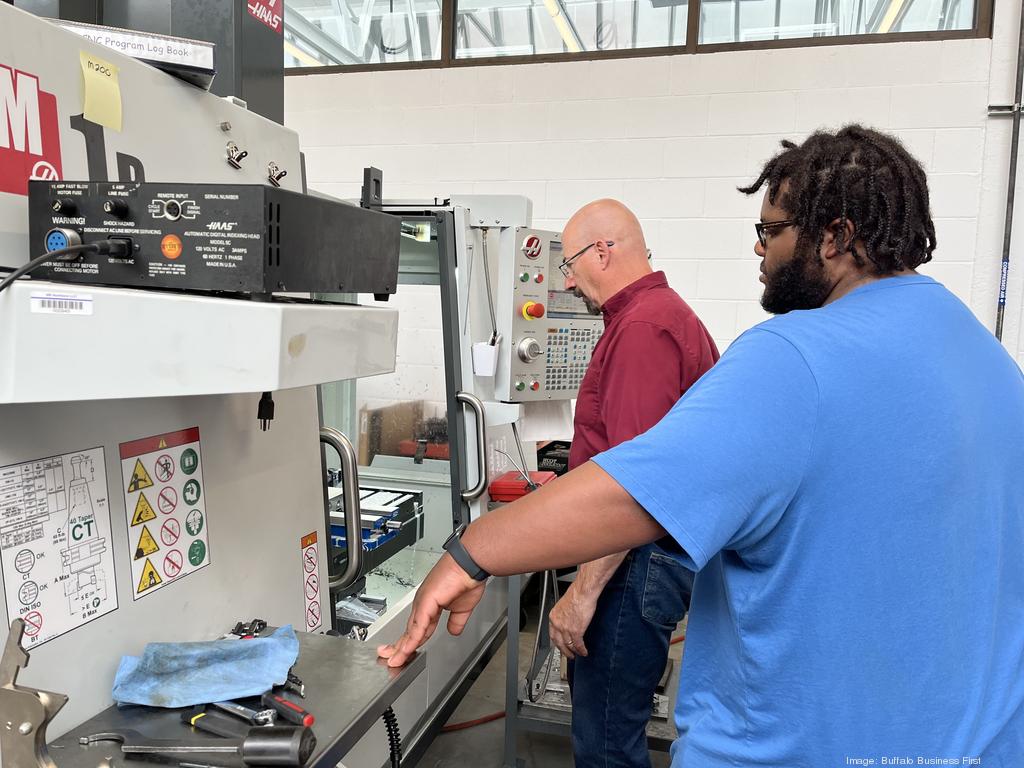
From left, Jon Sieminski, director of manufacturing operations at the Northland Workforce Training Center, directs student Troy Bratten on using a CNC mill.
Last year, Northland changed the name of its machining program from Machine Tool Technology to CNC Manufacturing and Machining, to make it more appealing to young people like Bratten, Tucker said.
“They don’t know that there’s a career path where you can make upwards of $100,000 a year, and they don’t know the number of open jobs locally,” Tucker said. “People don’t know that manufacturing employs 60,000 people a year locally. People are making products in aerospace, automotive and medical that are saving our lives, and they’re making a lot of money doing it.”
Help needed
Machine shops across Western New York have been searching for skilled labor for the better part of a decade, but the recent labor shortage magnified the problem, specifically for machinists.
Candice Pineau, president of Quality Grinding & Manufacturing in Hamburg, said her company is investing in technology and new equipment to try to offset the shortage of workers. She said she’d also like the shop to start its own apprenticeship program to teach younger generations machining skills and to build a workforce pipeline.
Jennifer Frederick-Kelly, president of Frederick Machine & Manufacturing Inc. in Buffalo, said her company needs to hire six people to accommodate recent growth. She said the shop has had to turn down work because they don’t have enough hands on deck.
And John Goller, president of Arrow Grinding in Tonawanda and chairman of the Buffalo Niagara Manufacturing Alliance, said the need for machinists will increase as companies continue to onshore their supply chains.
“This started before the pandemic, because America realized that to be competitive we need to make things here domestically,” Goller said. “Getting things shipped overseas is not a cost savings. Manufacturing is coming back to this country there’s going to be a bigger need for machinists.”
Goller said most of the machine shops in Western New York are smaller companies that rely on schools like Northland to provide young, entry-level workers who want to build careers. Changing the perception of the field will be key to sustaining it, he said.
The generalization is that machining is a dirty job, with low pay and little required skill, but the opposite is true, Goller said: A typical starting wage is $50,000 to $60,000.
“This is a fantastic career for people, and these are skills they’ll have for the rest of their lives,” he said. “It’s turning some raw material into a part — there’s a reward that’s satisfying. Whether it’s for the military or cars running or airplanes flying. These people are really contributing to American society. The country can’t run without them.”
Tucker is trying to change perception of the field, first by changing the program name and also by publishing videos on the school’s website educating students about what it is.
Northland is working to use Build Back Better funding to deploy a short-term, 12-week certificate program in machining. Participants would earn as they learn, Tucker said, providing basic foundational programming and CNC machining skills. Tucker said he should know if that funding has been secured by October.
Love has a few options for where he wants to work locally after graduating.
“As a machinist, the sky’s the limit,” he said. “It is so wide and vast the things that you can do. For anybody who is not afraid of standing for long hours or getting your fingers dirty, and for someone who wants to get into something that is meaningful, I think machining is the perfect fit.”

